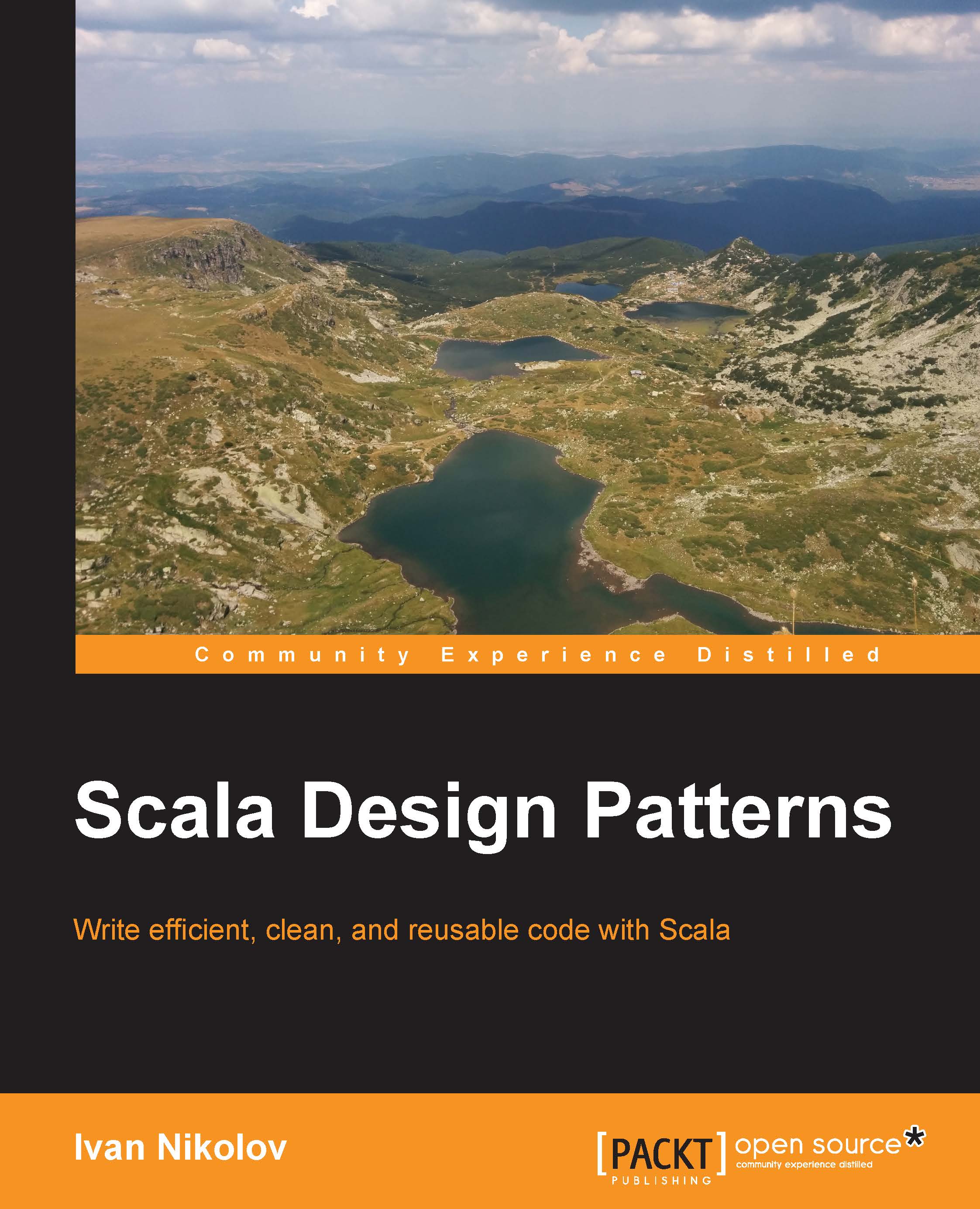Chapter 10. Functional Design Patterns – The Deep Theory
The Scala programming language is a hybrid between a functional and object-oriented language. Most of the object-oriented design patterns are still applicable. However, in order to facilitate the full power of Scala, you also need to be aware of the purely functional aspects of it. When using the language and reading tutorials or best practices, developers will most likely notice terms such as monoids, monads, and functors appearing more often as the problems become harder or the solutions are desired to be the more elegant. In this chapter, we will focus on the following functional design patterns:
Monoids
Functors
Monads
There are a lot of resources on the preceding topics all over Internet. The problem is that many of them are extremely theoretical and hard to understand by someone who is not really familiar with mathematics and more specifically—category theory. As it happens, in practice, many developers lack the deep mathematical...
























































